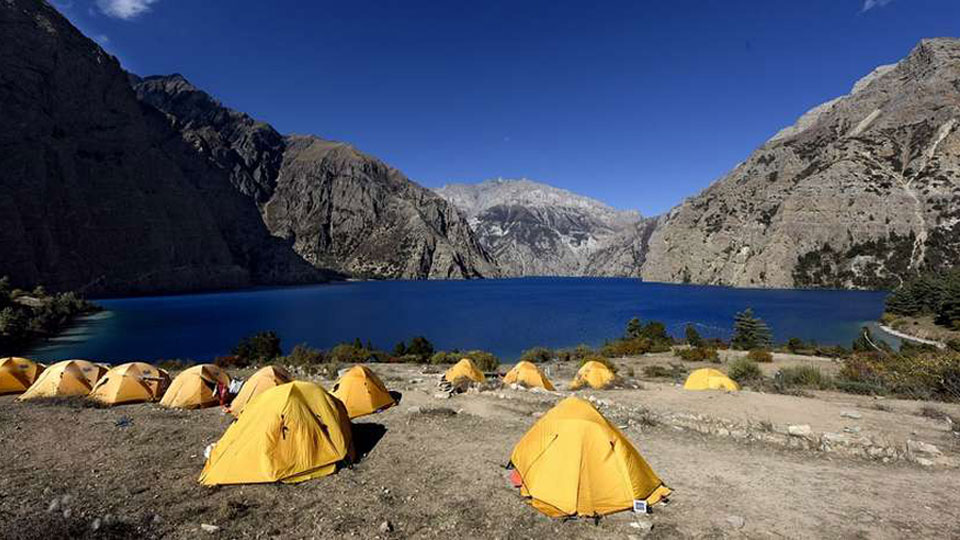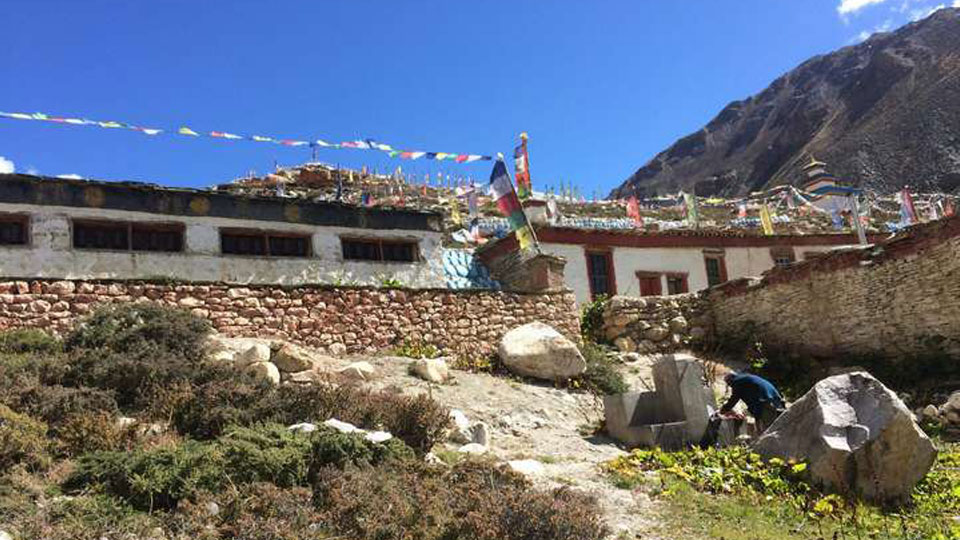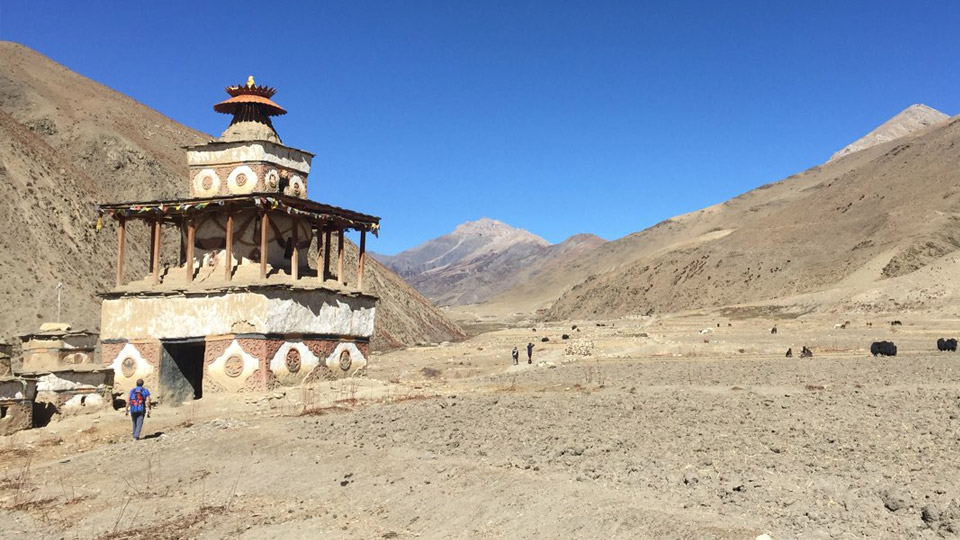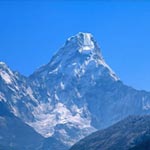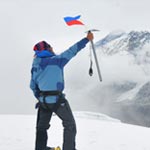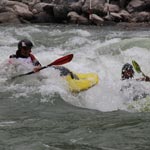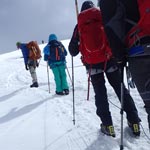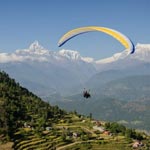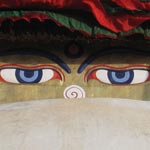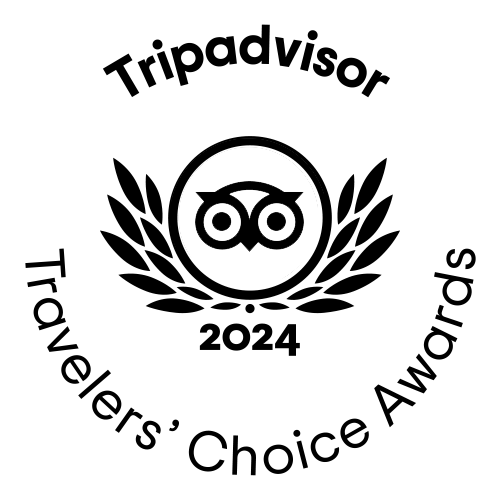Click outside the modal to close.
- HOME
- TREKKING
- Annapurna Region
- Everest Region
- Everest Panorama Trek
- Gokyo Lake Trek
- EBC via Gokyo Lake and Cho- La Pass
- Everest Three High Passes Trek
- Everest Base Camp Trek via Jiri
- Everest Base Camp with Island Peak
- Everest Base Camp Trek
- Trek to Everest Base Camp
- Everest Sherpa Village Trek
- Everest Trekking & Return Heli Flight
- Mani Rimdu Festival Trekking
- Everest Base Camp Luxury Trek
- Langtang Region
- Mustang Region
- Peak Climbing
- Other Region
- DAY TOURS
- Paragliding in Pokhara - Day trip
- Nagarkot and Bhaktapur - Day Tour
- Everest Flight ( Mountain Flight)
- Everest Base Camp Helicopter Tour
- Helicopter Tour to Langtang Valley
- Pokhara City- Day Tour
- Heli Tour to Annapurna Base Camp
- Rickshaw ride around Kathmandu- Day tour
- Chandragiri Cable Car Ride- Day tour
- ABOUT US
- INFO
- TRAVEL GUIDE
- BOOK NOW
- CONTACT
Upper Dolpa is the remotest part of Nepal and has toughest geographical complications. Moving further up from lower Dolpo towards the northwestern part is where upper Dolpa lies. Despite the remoteness, the place has gratified several hearts and minds of travelers who seek to explore the hidden beauty of Nepal. Despite the remoteness, it offers ample opportunities to explore around and enjoy the beauty and make the trip worth taking. Traveling through the Dolpo region will offer you the chance to visit the largest National Park of Nepal, Shey Phoksundo National Park which lies in this region which is spread in the area of 3,555 Km² and touches two districts: Dolpa and Mugu. The national park is home to rare wild species like snow leopard, Himalayan black bear, wolf, mountain goat, jackal, blue mountain sheep, and the wide variety of flora. The famous Shey Phoksundo lake lies within the national park. In addition to exploring the natural beauty, the trip will also provide you the opportunity to get a closer look at the most traditional religion and culture practiced here. The unique and ancient Tibetan Buddhist Bon Po religion is still in practice here. Upper Dolpa lies in the rain-shadow area, and thus experiences dry weather most of the times. It would be better to plan for the trip around April to September. As this trek is tougher than other treks and takes many days to complete you need to be in sound physical health to undertake this journey. If you seek relatively easier trek then you may go for Lower Dolpo Trek instead. Trip Highlights We acknowledge that you are joining us for the adventure trip in Himalayan region of Nepal, where weather conditions, health, and fitness of the member or unexpected natural disaster can compel us to change the itinerary and if so you have to understand it but we would try our best to keep the suggested itinerary as per the original schedule. Your safety and satisfaction of the trip is our paramount concern while traveling with Aiming Adventure and we ensure you our best team, logistics, professional services to make sure that you would have an amazing trip of the lifetime with us. Also note that our trip leader deserved the final decision if the trip has to amend, change the route or cancel due to the extreme conditions for the safety precaution. However, he will try his best to ensure that the trip runs according to the stated plan but be prepared for flexibility if necessary. Aiming Adventure suggests you get travel insurance that covers all the added expenses that might result due to various health issues, injuries or accidents (together with the air ambulance, helicopter rescue, and other treatment costs). Also, make sure that your insurance policy covers all the extra activities that you are planning to accomplish throughout your stay in Nepal. In addition to this, the policy should also cover death, misplaced luggage, theft and liability, cancellations, medical treatment (counting hospital charges, cost of the medicine, doctor’s fees) as well as repatriation cost. Most of the days while trekking in Nepal takes you above an altitude of 3000m, it is kindly requested to ensure that your insurance policy covers treks that go over 4000m. Buying insurance is highly recommended. Trekking in Nepal is physically tougher in some of the regions. However, no previous trekking experienced is required but if you have, it is a great plus point. Trekking in Nepal is a non-technical walk. The highest height you would reach on your trip is 5,160m from sea level. The walk involves lots of ups and downhill takes you through local villages, farming lands, terraces, and riverside but as long as you have a strength of walking for 4 to 6 hours a day, you are qualified for the trek. However, you should be having moderate health and fitness. We strongly suggest travelers consult with your medical doctor before traveling and do the regular checkup of your health and report us while booking a trip with us. A part of the health and fitness, the participant must be having a positive attitude and strong determination for the successful trip. AMS (acute mountain sickness) is a serious issue. It is the result of the failure of the body to adapt to high altitudes and can affect anyone, regardless of age or fitness. It usually occurs above 2,500m and the likelihood of being affected increases as you ascend. The way to reduce the effects of altitude is to ascend slowly, 300 meters per day above 3,000 meters until you have acclimatized. Poor acclimatization results in a headache, nausea, sleeplessness, difficulty breathing and swelling of fingers and glands. The only cure for AMS is to descend to a lower altitude and your guide’s decision on this matter is final. Although our routes are carefully planned to allow for proper acclimatization you may feel some effects of altitude for the first few days or at higher altitudes. Breathlessness, lethargy and mild headaches are not uncommon and generally decrease as your body adjusts. Maintaining adequate fluid intake is essential. Please advise your guide if you feel more severe symptoms and do not medicate yourself without discussing it with them first. Aiming Adventure offers a wonderful opportunity to help you visit those areas, cultures, and traditions of Nepal that have never been explored before. Your trip itineraries are fully customized in order to meet the individual needs and interests of each traveler. We also partner with local people and Leaders to help you get the maximum out of the trip. We are highly dedicated and offer years of experience to plan an outstanding adventure trip for you. Customer service is our top priority; therefore, we cater to every possible need of yours during your stay in Nepal, be it the food, accommodation, varied destination or your communication needs. Despite all these facilities, our best packages are offered at a very competitive rate. Nepal visa is the easiest visa to obtain; you may buy your Nepal visa at your nearest Nepalese Embassy/ Consulate or Mission offices abroad or buy this upon on arrival to Kathmandu international airport upon your arrival. You have to have 2 passport size photographs, Visa fees in USD cash & valid passport at least for 6 months valid at the starting of the trip. By Air: Tribhuvan International Airport, Kathmandu is the only international airport in Nepal if you are coming by any international flights. By Overland: Tourist Visa Fees: 3 days transit visa - Free of Cost In this Upper Dolpo trek, the minimum group size would be two and the maximum group size is ten or more on request. We can also organize a private trip for a solo person with a single supplement cost. Else, join our estimated group departure dates available online or ask us with your personal dates, we will open group date on the same date. Most of these hikes take you on the remote Himalayan region, it is very essential that you are accompanied by the very experienced and qualified & equipped leader for a safe and successful trip. We Aiming Adventure employee the local trek guide and staff who are trained and qualified on the trip we worked on. Our guides are trained and licensed from Nepal Gov., certify from TAAN & Nepal Mountaineering Association. All of our leading Trekking and Climbing Guides are experienced more than 10 years. We have trained them especially for your trip, to cater to the flexible needs of our peoples in the group joining from different countries, this double assure you that your trip is at the right and professional hands. While in Kathmandu, your accommodation is at standard hotels (Attached Bath, A/C, 24 hours running hot/cold shower) similar of 2 to 3-star standard hotel and while in the trek, your accommodation is at Mt. Lodge/local tea houses, they are clean and comfortable. Our entire accommodation is at twin share unless stated but single supplement accommodation is also available on personal request with the additional cost. We do have two best seasons to attempt this in Nepal. As this trip is a big trip for you, we always suggest you come at the right time of the year as far as possible. Along with warm clothes, you will also need other equipment for the sufficient protection of your body. Below is the list of necessary items that you need to pack before commencing your trek. Head- Hat (with a wide brim), Sunglasses (with UV protection), Sunscreen lotion and Lip balm Upper body- T-shirts (3), light and expedition weight thermal tops, Fleece jacket and pullover, Fleece wind-stopper jacket (Optional), waterproof (preferably breathable fabric) shell jacket, down vest/jacket (included) Hands - Lightweight gloves, heavy-weight gloves/mittens with a waterproof outer shell Lower body - Underwear (4), hiking shorts (2), lightweight cotton long pants, light and expedition weight thermal bottoms, fleece or wool pants, waterproof (preferably breathable fabric) shell pants Feet - Thin, light-wear inner socks (4), thick, warm wool hiking socks (4), hiking boots with spare laces, camp shoes (sneakers and/or sandals), gaiters. Accessories - Sleeping bag rated to zero degrees F (included), headlamp with spare bulb and batteries, small padlock or combination lock, basic first aid kit, large plastic bags (for keeping items dry inside trek bag), day pack, water bottles (2), hiking pole/walking sticks, small earplugs Toiletries -Soap, shampoo, toothbrush, small wash towel Extras - Cameras with extra batteries and cards, binoculars, light balaclava or warm fleece hat, reading books, trip map/guidebook, journal & pen, iPod & travel games (like cards, chess, and backgammon) Vaccination is required to plan your trip to Nepal but it is not a must to have the thing to come, but highly suggested. Your doctor will have the information of the vaccination you would require to the country you will be traveling. Hepatitis B, Japanese Encephalitis, Polio, Rabies, Tetanus, Typhoid, and Malaria, etc. are the recommended vaccination for travel Nepal. Our porters are fully equipped and insured for each trip they are undertaking with us. As you know that we are very sincere with the porter issues and their situation while on trek thus we make sure that our porters are fully prepared for the trip. We are closely working with the International Porter Progress Association for the welfare and be fit for the touristic porters. The maximum load carried by our porter is 20 to 40 KG maximum. These days, there are enough communication facilities on this trek, most of the local villages have local telephone booth phones thus if required, you can easily communicate with your friends and family, however, the cost is slightly expensive, 1-2 $ per minute. Nowadays, during the clear days, reception of Nepalese cell phones is on throughout the trail, your guide will have the cell phone on the trip. And most of the teahouses in the mountain has WI-FI facility with the cost 1-5 Dollar. However, sometimes cell phones or the internet may not work for a few days to be prepared for that. Once you would choose which trip you would like to book with us, write to us with the information or phone us on our phone number for the trip booking confirmation. We have an online trip booking option, you may go to that link, choose your trip and date and follow the instruction with the information required and submit us. You could also drop your message at your online chat section or email us at [email protected] also can make a call us on Cell/Viber/WhatsApp +977 9849211457. Upon your arrival at Tribhuvan International airport at Kathmandu, we offer you pick up facility. Our representative from the company will be there to pick you up from the airport. We will then escort you to the finest tourist standard hotel in the city and make sure of your comfort. You get to meet our company’s team and other team members who you will go on the trek together with. We might as well stroll around the city and get freshened up. In the evening we offer you lavish welcome dinner at the finest restaurant in the city along with cultural entertainment program. We then get back to the hotel for the night. Today we will take a short tour around the Kathmandu valley and visit some notable places. We will be visiting Pashupatinath, Swoyambhunath (Monkey Temple) Bouddhanath, and Kathmandu Durbar Square. These religious and historical sites are rich in art and architecture. The stone works and wooden carvings on the temples and around the temple area are creative and artistic. These places hold religious significance for both Hindus and Buddhists. A huge number of devotees throng to these sites during major religious festivals in Hindu and Buddhist religion. We explore around, take snaps and buy some souvenirs. Then we return to the hotel and get our bags and trekking equipment packed and we get ready to go on the trek tomorrow. We will get ready to set out on the journey. We will get to the airport for our flight from Kathmandu to Nepalgunj. The one hour long flight will offer you the nice and beautiful scenic views. After landing at the Nepalgunj airport you will be escorted to the hotel. You will get to take rest for some then. Then we will go for some exploration around. We will be walking through Tharu villages and local market area. We might as well visit the mini zoo there. We will spend the day exploring around and get back to the hotel in the evening. We will get on an early flight from Nepalgunj to Jhupal which is the district headquarter to Dolpa district. The flight offers the grand and exceptional view of Himalayas. From Jhupal we will get prepared to start our trek on foot. We will start with the walk along the village areas and vast farmland and then along the bank of Thuli Bheri river. We will then cross the bridge over the river and walk uphill for some time. We will then finally reach Sulighat and get prepared for our night’s stay there. The walk for the day starts with the walk along the bank of the river. Then we will continue our walk ahead and walk past the deserted human settlement areas at Raktang. We will then cross the river and will have to go through few uphill and downhill walk before reaching the grassland area by the side of the river. We will then reach the crossroad where the trail separates. We will catch the trail leading to Phoksundo and continue our walk up through the rugged trail and will bring us to Chepka. We will then have to pass few ups and down before we reach Renje. We will prepare for the night stay at the camp. We will begin the day with the uphill walk. Further, ahead more uphill and downhill walk continues. We will then reach a point where two rivers, Pungma and Phoksundo meet. We will then take the walk alongside the Phoksundo river and the river. We will then reach the crossroad where the trail separates. We will catch the trail ahead towards the forest area. We will then have to walk up through the steep ridge. After we reach the top we will get the distant view of Phoksundo Lake. Enjoying the grand view of Phoksundo river and the woods around, we will walk up utill Ringmo village. Once at the village we will take a hike to Phoksundo lake and spend the night at the camp there. We will give a day for taking a break and enjoying the day with soothing our eyes with splendid beauty around. This day will also provide us the better chance for enough acclimatization so that it will prevent any possible Acute Mountain Sickness (AMS) and adjust our bodies to the higher altitude and changed environmental condition. We will spend the day in the cool and soothing company of Phoksundo Lake. We will also walk to the nearby village of Ringmo. We will explore the Tibetan influenced village and later get back to the night. The night, like yesterday, will be spent at the camp near the lake. We will begin the day with the walk around the lake preparing for our walk further ahead in our trek. We will walk along the rugged trail that will take us to the plain area of Phoksundo river. The walk then continues through the valley and further ahead. We will walk past the river and then along the bank of the Phoksundo river. The sight of the river with the marshland around makes it quite unique sight. The sight is sure to get us engaged for quite a while. We will then get prepared to spend the night in a camp nearby the bank of the river. The trek for the day starts with the walk ahead from the Phoksundo khola. We will follow the trail along the glacial valley that will lead us to the place where the two rivers, Phoksundo and Ghyampo Kapuwa, meet. We will cross the wooden bridge over the river and follow the narrow trail along the valley. The path ahead is tough, rugged, rocky and steep and moves along the Shey Gompa trekking trail. The climb up will require quite strength and might leave us tired. But once we reach at the top the green grassland, the view of valley down below and the sight of Kang La Pass will make us forest our pains. We will then get prepared for our night stay at the camp in Phoksundo Bhanjyang. We will leave Phoksundo Bhanjyang early in the morning and head towards Shey Gompa as the destination for the day. The trek for the day begins with the walk towards Kang La Pass. The steep climb might be relatively tougher. We will walk up utill the top. The view seen from the top is amazing to look at. The wide view of valley, and the river in a single picture is a pleasing sight. We will then walk down the pass and then along the bank of the river. We will then reach a vast grassland area where we might spot the animals like yaks and sheep grazing. There are also some old style huts of the herders scattered around. The walk along the trail ahead will bring us across a red Chorten and then walk past the bridge and finally arrive at Shey Gompa. Night at a camp in Shey Gompa. We will give a day for taking rest as well as for acclimatization purpose and Shey Gompa is the best place for this. We will be spending the exploring around Shey Gompa. The Gompa holds religious and historical significance. The monastery is majorly revered by traditional Chaiba community and was built around 11th century. It is also rich is artistic beauty and has made use of traditional architectural designs. After spending enough time around the Gompa we will walk up till the crystal mountain. We will enjoy the view around and then return back to the Gompa and get prepared for the night’s stay. We will leave the Shey Gompa early in the morning and continue with our trek. We begin the day by walking along the flat and narrow trail passing through the woods. The trail then takes downward turn and we will walk through the rocky trail. We will then ,Saldang La in a short while. From here we will have to go further downhill through the steep trail. During the walk we can get the nice view of vast grassland. The trail will eventually bring us to Namgung village. We also get to see the deserted Namgung monastery. We will spend some time exploring the village and then spend the night at the tent. We will leave the small settlement area of Namgung village and head ahead towards Saldang, the largest village in inner Dolpo) as the destination for the day. We will have to take the steep uphill climb through the rugged and rocky path. The climb might get tough for some time. But after the tiresome climb, we will reach the top from where the picture of Saldang village down below on a huge plateau becomes a pleasing sight to observe. We will then walk down to the village. We will spend the night at the camp. Today we will be trekking as far as Yangjze Gompa, starting from Saladang village. We will begin the walk early through the village. In a short while, we cross the village and begin walking through the uphill and downhill trail for some time. Then we arrive at small settlement areas of Tiling, Lurigaon and, Kigaon. We will cross them and follow the trail leading to Panjyang river. We will cross the river and continue the walk through the remotest area of Dolpa. We will then finally reach Yangjze Gompa. We will explore the Gompa and then set up the camp for the night. Our destination for today is Sibu. We do not walk ahead from Yangjze Gompa but walk back to Saldang and then from there, catch the trail leading to Sibu. We walk through the settlement areas with small huts, grasslands, fields and, Chhortens before we reach Saldang village. From Saldang, we take the trail leading to Sibu. After walking for the couple of hours we will finally reach the destination. We will be spending the night in a tent. We begin the day by leaving behind Sibu and heading towards Jeng La Phedi. We will be walking alongside the Nam Khong river and walk further ahead. We will continue walking until we come across the point where two rivers meet. From here we will then take slightly uphill walk which will eventually bring us to Jeng La Phedi. We will take in the beauty around. We might as well spot yak caravans along the way if we get lucky. We will spend our night in a tent at Jeng La Phedi. We will leave Jeng La Phedi early in the morning and head ahead with the trek for the day. We will begin with the uphill climb for couple of hours. The climb will bring us to the top at Jeng La Pass. We get the splendid view if Dhaulagiri from this nice height. We will spend some time at the pass and then head down through the rough trail. The walk will then take us towards Tarap valley. We will then reach the valley and from there we will walk towards Tarap Chu and also visit Tokyu monastery on the way. We will then take the walk down towards the river and then finally reach Dho Tarap. Night in a tent. We will set aside a day for the purpose of acclimatization to prevent any possible symptom of Acute Mountain Sickness (AMS). This day will also provide us ample opportunities to relax and explore around. We will go for leisure, walk around the village and visit some gompas there. We will also enjoy the view of the valley with the villages. We will then return back to our camping spot and spend the night there We will leave Dho Tarap and begin the day with the downhill walk. The trail will bring us to the valley and further ahead we will walk past the gorge. The trail then passes through some bushy areas. We will continue our walk further and then reach the meeting point of Tarap Chu and Lang river. Walking ahead, we will then reach the vast pastureland at Karmakharka. The green sight around is quite pleasing to look at. We will then get prepared for the night’s stay in a camp there. We will walk ahead from Tarap Khola and then head towards the gorge of Tarap river. We will be walking alongside the river for a while. We will have to cross the makeshift bridge made of logs. Walking through these remote and rugged parts will give you the most thrilling and adventurous feeling. We will then continue with the walk until we finally reach Khanigaon. We will then set up the camp by the side of Tarap river and spend the night there. We will begin the day with the walk along the trail passing through the forest area. After passing the forest the trail will take us to gorge and then walk downhill towards the river. The walk will then bring us to Tarakot. The sight of farmland around gives the pleasing feeling. We walk further ahead towards the bridge and crossing it continue walking along the bank of Thuli Bheri river. In a short while, we finally reach Dunai. Night at a lodge in Dunai. The day begins with the walk alongside the bank of Thuli Bheri river. We will then follow the trail running across the farmland and villages. Further ahead, we walk for some more hours before the trail finally brings us to Jhupal. Our long trek on foot finally comes to an end here. We will soothe our bodies and spend the night at one of the lodges there. We will be flying back to Kathmandu tomorrow. Today we will first fly to Nepalgunj from Jhupal. From Nepalgunj, we will take a flight to Kathmandu. We will enjoy the last view of the landscapes, hills and, mountains from the flight. After the scenic flight, you will be escorted to the hotel. You will have time to get relaxed and take a good rest after the long trek. You may spend the evening strolling around the city. Night at the hotel. Here ends our memorable journey together. Today is your last day at Kathmandu. We offer to drop you at the Tribhuvan International Airport. If your flight is scheduled in the evening, you can visit some places around Kathmandu. We exchange final greetings at the airport and hope for meeting next time as well. We share best wishes and depart. Instead of the departure, you might also choose to go on our next trip if time permits.
Group size:
2-10 pax
Transportation:
Car,Flight & Jeep
Trip Type:
Tea House & Camping Trek
Arrival Location:
Kathmandu, Nepal
Departure Location:
Kathmandu, Nepal
Meals:
Breakfast, Lunch, Dinner
Max-Altitude:
5160m/ 16,924 ft
Accommodation:
Mountain Tea House & Tented Cam p
Cost Includes
Cost Excludes
Information about the Trip:
Travel Insurance
Health, experience, and fitness:
Altitude Information
Why to Trek with Aiming Adventure?
Passport & Visa Information:
Nationals of SAARC countries do not need a visa when visiting Nepal. As per this rule, Indian nationals do not require the visa. A transit visa is provided for foreign nationality for 3 days. Visa must be obtained for staying over the initial period of three days.How to get into Nepal and get Visa:
Group Size:
Our Guides, Trip, and Safety:
On every trip, there would be our one Trek guide and one porter. But if you are traveling with the more numbers there would be one trek leader and assistant guide (depend upon the group size). Also, we assign with every two trekkers would have one Sherpa helper for carrying your trekking bags.
Meals and Accommodation
In the city, only breakfast is included on the offered trip itinerary but while in trek full board of meals is included (Breakfast, Lunch & Dinner, and Tea- Coffee). We provide you food from the local tea- house/ Mt. Lodge from en route. Breakfast and dinner are to be provided from the same tea- house/ guest house we would overnight but lunch would be en route in between.
Foods provided depend on the availability of the Mt. lodges we would be staying but in general, you can have Nepalese cuisine (Dal Bhat), Tibetan fried bread, various soups, Mo Mo’s (steamed dumplings), potatoes, pasta and even a version of pizza! So, overall, you have a different choice of food on the trek. You can pick up from the menu whatever you would like to have.Best Trekking Seasons:
Spring: - (March, April, May) - Best warmest time to trek. Rhododendron flowers in bloom- excellent trails and clear skies, best visibility. Good Temperature, warmest weather of the year.
Autumn: - (Mid-September, October, and November) - Excellent trails, clear blue skies, best visibility, neither too hot nor too cold time. This is another best time to trek.
Winter Months: - (December, January, and February) are also good, but it’s obviously colder than other times. You have to be prepared for this. It is up to you to plan this trek at this cold time or not.
Summer: - Monsoon, so rain and visibility can be a big issue (from Mid-June, July, and August). We do not suggest you this time for the trek.What to bring?
Vaccination:
Taking Porters:
Communication facilities on this Trek:
How to Book:
Once your trip booking request would be received, we would suggest the final trip booking procedure with advance payment of the trip. The non-refundable deposit of 20% (per person) is required to confirm a place on your selected adventure.PACKAGE DETAILS
Day: 01 - Welcome day in Kathmandu - (1,300m/4,264 ft) -
Day: 02 - City tour and trek preparation day - -
Day: 03 - Fly from Kathmandu to Nepalgunj & Transfer to the hotel - -
Day: 04 - Fly from Nepalgunj to Juphal - (2320m/7601ft) and trek to Sulighat (2070m/6790ft) - 2-3 hours
Day: 05 - Trek from Sulighat to Renje - (3010m/9873ft) - 5-6 hours
Day: 06 - Trek from Renje to Ringmo village - (3640m/11940ft) and the Phoksundo Lake (3620m/11874ft) - 5-6 hours
Day: 07 - Break day in Phoskundo Lake and exploration round Ringmo Village - -
Day: 08 - Phoksundo Lake to Phoksundo Khola - (3,630m /1190ft) - 3-4
Day: 09 - Phoksundo Khola to Phoksundo Bhanjyang - (4,120/13,514ft) - 6-7 hours
Day: 10 - Phoksundo Bhanjyang to Shey Gompa - (4390m/14400ft) via Kang-La pass (5160m/16325ft) (5-6hrs) - 5-6 hours
Day: 11 - Rest day at Shey Gompa and visit to Crystal Mountain - -
Day: 12 - Shey Gompa to Namgung village - (4430m/14530ft) via Saldang La (5010m/16432ft) - 6-7 hours
Day: 13 - Namgung village to Saldang - (3620m/11,874ft) - 4-5 hours
Day: 14 - Saldang to Yangjze Gompa - (4960m/16267ft) - 4-5 hours
Day: 15 - Yangjze Gompa to Sibu - (4560m/14957ft) - 6-7 hours
Day: 16 - Sibu to Jeng La Phedi - (4900m/16072ft) - 5-6 hours
Day: 17 - Jeng La Phedi to Dho Tarap - 4080m/13382ft) via Jeng La pass (5090m/16695ft) - 6-7 hours
Day:18 - Exploration and acclimatization day in Dho Tarap - -
Day: 19 - Dho Tarap to Tarap Khola - (3800m/12464ft) - 6-7 hours
Day: 20 - Tarap Khola to Khanigaon - (3150m/10332ft) - 5-6 hours
Day: 21 - Khanigaon to Dunai - (2030m/6658ft) via Tarakot (2537m/8321ft) - 5-6 hours
Day:22 - Dunai to Jhuphal - (2320m/7610ft) - 2-3 hours
Day: 23 - Fly from Jhupal to Nepalgunj and then to Kathmandu - -
Day:24 - Departure Day to the Final Destination - -
YOU MAY ALSO LIKE
AIMING ADVENTURE
NEWSLETTER SUBSCRIPTION




